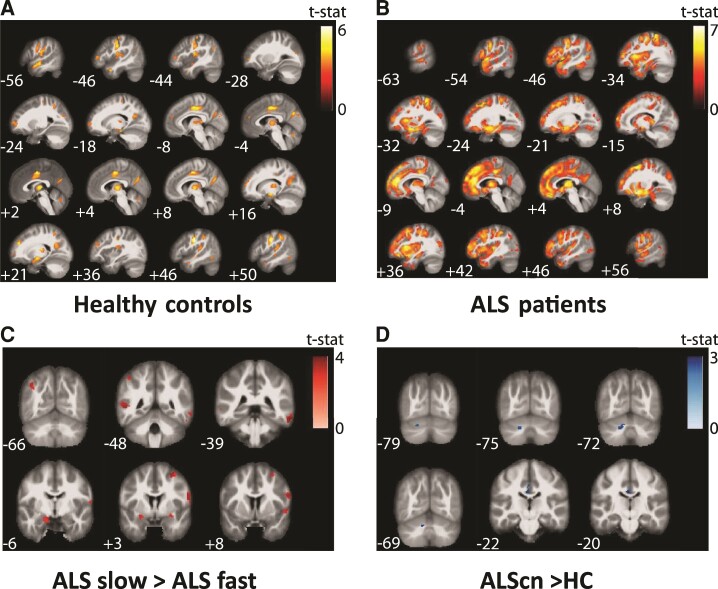Figure 4.
Correlation of PAD with voxel-based morphometry data showed significantly different patterns between healthy elderly people and patients with ALS. (A) The focal representation of increased PAD score in healthy controls is significant different to the (B) disease-associated focal representation of increased PAD of ALS showing a typical frontotemporal atrophy pattern. (C) Comparison of voxel-wide grey-matter volumes between ALS fast and slow progressors (ALS slow > ALS fast). (D) Comparison of voxel-wide grey-matter volumes between ALScn cases and controls (ALScn > controls). Significant clusters are displayed with T-score values represented by a colour map. An uncorrected threshold of P = 0.001 was used for all the presented illustrations and only clusters with at least 50 voxels extent were retained in the results. All clusters shown in A and B also passed a more conservative significance threshold of P = 0.05 applying false discovery rate (FDR) correction. No clusters in C and D survived FDR correction. All voxel-based analyses were controlled for total intracranial volume, chronologic age, sex and site of measurement as these were potential nuisance variables.

